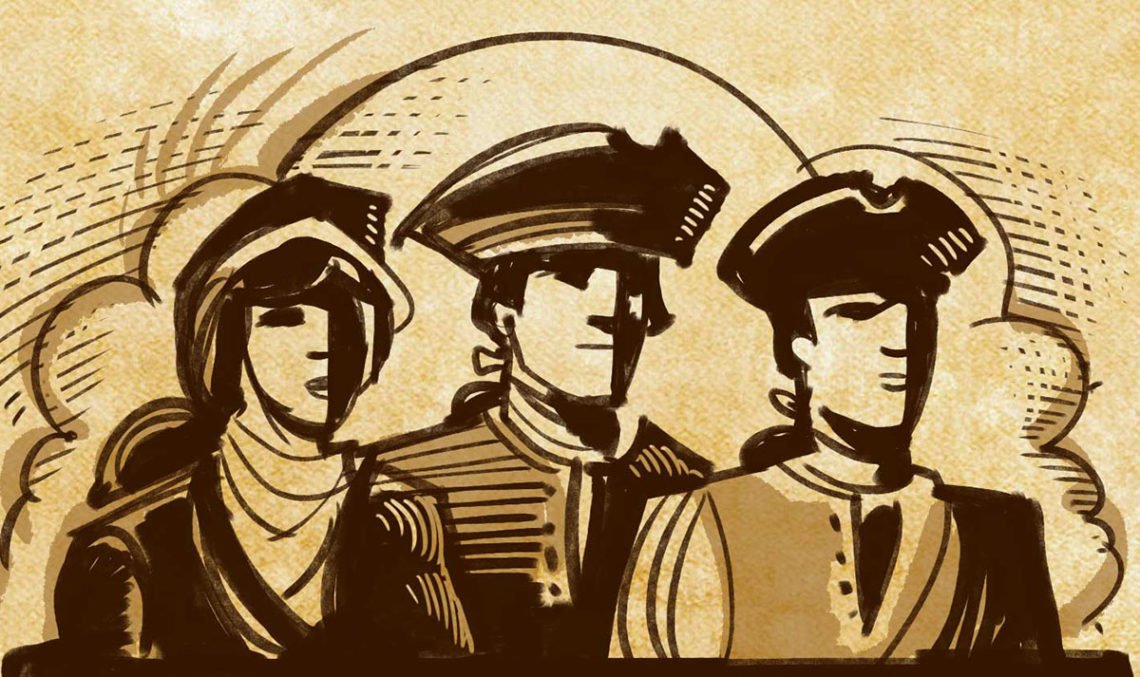The national conversation about political correctness is a clash between two of the most important American values – freedom and equality.
How much freedom should people have to say nasty things that marginalize those who have historically been treated unequally?
The First Amendment’s answer to that question is to favor speech over good manners and civil discussion. It protects insults, lies, even hate speech, along with the politically incorrect act of burning the American flag.
But there are limits. One limit is employers and educational institutions have the legal responsibility under federal civil rights laws to protect against a racially hostile or sexually hostile atmosphere.
A student can’t stride into class in a KKK robe, even though the First Amendment protects the right of KKK members to wear the robes at a demonstration. A CEO can’t plaster his office with pinups of nude women, even though he has a First Amendment right to have pornography at home.
Sometimes political correctness is just correct. In a civil discussion or in the workplace or the classroom, people shouldn’t use racist, sexist or demeaning words – even if those words are protected by the First Amendment.
The University of Oklahoma’s decision two years ago to expel a student who sang an old KKK lynching song on the bus back from a fraternity party is a good example. Outside of the university that kind of hate speech is protected. But the university has an obligation to act against a racially hostile environment. Legal experts differed on whether university violated the student’s rights by expelling him.
The highly publicized 2015 confrontation on the University of Missouri campus involving Melissa Click vividly featured the clash between civil right protesters seeking equality and journalists exercising their freedom of the press to cover the story.
Concerned Students 1950 protested the university’s history of segregation and belated efforts to attract black students and faculty. The protest forced the resignation of university president Tim Wolfe.
As the black student protesters gathered in Carnahan Quadrangle after Wolfe’s resignation, a wall of the protesters blocked reporters and photographers, telling them the students needed to be alone with each other.
“Hey, hey, ho, ho, reporters have got to go,’ they chanted.
Tim Tai, a journalism student covering for ESPN told the wall of protesters: “The First Amendment protects your right to be here and mine…how about documenting this for posterity.” A few minutes later, Click, a communications professor, tried to remove a video journalist from inside the wall of protesters saying, “Hey, who wants to help me get this reporter out of here. I need some muscle.”
Members of the Missouri Legislature said Click should be fired for that action and an earlier video where she screamed insults at police. The university fired her without going through its ordinary process, prompting a complaint from the American Association of University Professors that the university had violated Click’s academic freedom and due process.
There were clashing First Amendment rights – Tim Tai was right that his First Amendment right gave him the freedom to photograph the demonstrators on a public square and the protesters had the First Amendment right to protest. But the protesters did not have a right to privacy in the public space.
There also were clashing ideas of political correctness. Click was enforcing one form of correctness – that black students should be provided with a safe space free from the press. The university submitted to the Legislature’s political correctness – the demand to fire Click for her speech.

Trigger warnings and micro-aggressions
The debate about political correctness in the 21st century has focused on two new terms that recently have gained currency on college campuses – trigger warnings and micro-aggressions.
Trigger warnings – a concept that emerged from study of post-traumatic stress – alert students that a professor is about to present upsetting material. One example would be a video about rape, that might trigger a reaction from a woman who has been raped.
A micro-aggression is a thoughtless slight putting down a group of people. One example would be asking Asian-Americans or Latino-Americans where they were born – suggesting that they are different than other Americans.
At some universities, trigger warnings and micro-aggressions have become cudgels wielded by a modern squad of thought police.
Kenan Malik, an Indian born writer and lecturer, gave an influential talk last year about the extreme use of trigger warnings. He wrote:
“Among content for which trigger warnings have been demanded, according to one list, are references to ‘misogyny, the death penalty, terrorism, drunk driving, how much a person weighs, racism, gun violence, drones, homophobia, PTSD, slavery, victim-blaming, abuse, swearing, child abuse, self-injury, suicide, descriptions of medical procedures, corpses, needles, discussion of ‘isms’, slurs (including ‘stupid’ or ‘dumb’), kidnapping, dental trauma, discussions of sex, spiders, insects, snakes, vomit, pregnancy, childbirth, blood, slimy things and holes.’ After which all one can say is, ‘Wouldn’t it be easier just to put a trigger warning on life itself?’”
At Oberlin College, trigger warnings were considered for classism and privilege, racism, colonialism, religious persecution, violence and suicide.
At the University of California, faculty training sessions suggested that among the possible phrases that could be considered micro-aggressions were “American is the land of opportunity,” “melting pot” and “I believe the most qualified person should get the job.”
At Harvard some female students called upon the university not to teach rape law because of possible distress.
Across the country, controversial figures such as former Secretary of State Condoleezza Rice and International Monetary Fund managing director Christine Lagarde, find themselves disinvited from campus speeches.
There’s a defense for the use of trigger warnings. In The New Republic Aaron R. Hanlon, a professor at Colby College, wrote last year that he uses trigger warnings not to keep his students from studying upsetting material but to warn them that he is about to teach it. He wrote:
‘I use trigger warnings in the classroom as a way of preparing students who may be suffering from post-traumatic stress disorder while also easing the entire class into a discussion of the material. The thinking behind the idea that trigger warnings are a form of censorship is fundamentally illogical: those who offer warnings, at our professional discretion, about potentially triggering material are doing so precisely because we’re about to teach it!”

Liberal identity politics undermines liberalism
But Malik thinks trigger warnings and micro-aggressions harm the idea of a liberal education. He said, “The university is a space for would-be adults to explore new ideas, to expand their knowledge, to interrogate power, to learn how to make an argument. A space within which students can be challenged, even upset or shocked or made angry.”
Malik thinks that today’s identity group politics, favoring groups traditionally discriminated against, has made it harder to achieve the traditional liberal ideals of unity and universalism.
“Once the left embodied a universalist vision. From well before the Enlightenment, radicals challenging inequality and oppression did so in the name of universal rights. Radicals insisted that equal rights belonged to all and there existed a set of values and institutions, under which all humans best flourished. It was a universalism that fueled…anti-colonial and anti-imperialist struggles of the twentieth century to the movement for women’s suffrage to the battles for gay rights, indeed to the struggle against apartheid.”
Now, he said, the left often embodies an approach that divides into groups rather than unifies.
In 2016, America witnessed a presidential election that mimicked this debate. One candidate railed against political correctness, while the other sought to knit together the disparate groups who had traditionally suffered from discrimination.
There were valid criticisms of both approaches. Donald Trump’s attack on political correctness sometimes seemed an invitation for supporters to engage in hateful speech. Meanwhile, critics thought Hillary Clinton’s campaign theme of “better together” sometimes devolved into identity politics that lost sight of the unified whole.
The preamble to the Constitution suggests we the people need to work harder to knit together our pursuit of liberty and equality to achieve that ever more perfect union.


No Comments